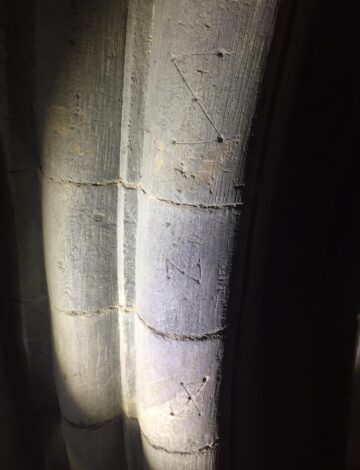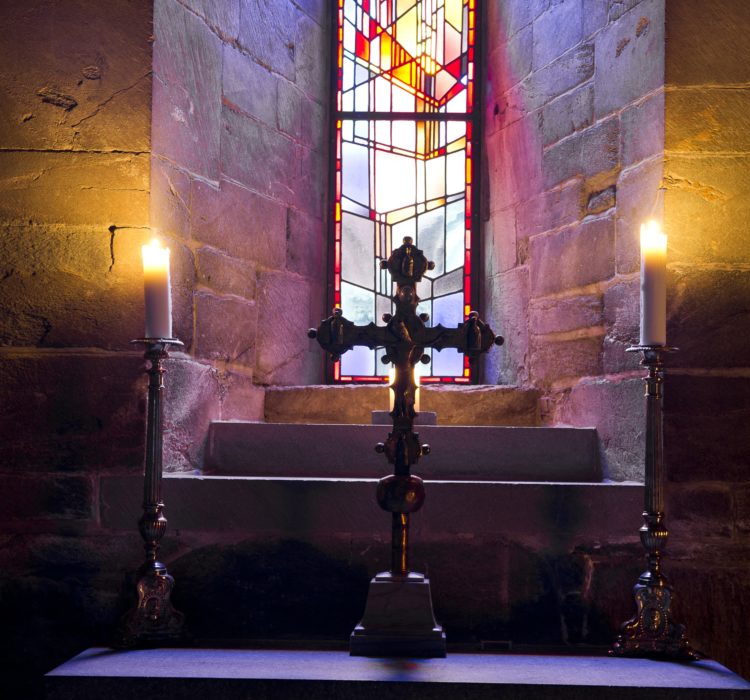Shortly after Olav's canonisation in 1031, a small wooden chapel was built on the site where he lay buried the first year. In 1070 King Olav Kyrre had the chapel replaced by a stone church. Kristkirken (Christ Church) was the largest church in Norway and the start of what would become Nidaros Cathedral. The silver casket with St. Olav's remains was placed by the alter of the church.
Over time, as the story of St. Olav's miracles spread, a growing number of pilgrims found their way to Nidaros. From 1152 to 1153, the pope's envoy, Cardinal Nicolaus Breakspeare came to Nidaros to establish a new archbishopric for Norway and the islands to the west. The Nidaros archbishopric encompassed a large area, and revenue from the Nidaros province helped finance a large-scale development of Kristkirken.
From the mid-1100s transepts were built to the north and south. These comprise the oldest part of the church still standing. The transept is built in a Romanesque style, as was Kristkirken, with massive, thick walls, small openings for windows and rounded arches. In the late 1100s, the Gothic style became more popular in Norway. The chapterhouse from 1160 was built in a transitional style, with elements of both Romanesque and Gothic architecture.
The Octagon, an Early Gothic, eight-sided apse was the first part to be built in a Gothic style. St. Olav's casket was placed on a base in the nave and pilgrims could come close to the relic when passing through the choir around the octagon. Around the year 1200, Kristkirken was demolished and replaced by the new choir in Nidaros Cathedral. By the mid-1200s the large High Gothic nave was finished on the west side and the cathedral was finally completed around 1300. The Gothic sections of Nidaros Cathedral include a high stone vault, larger windows and pointed arches. On the outside of the cathedral there are flying buttresses and pillars supporting the walls.

Craftsmen who built the cathedral were gathered in a Bygghytte, where many different trades were represented. Traces of those who built the cathedral are still present in the form of mason's marks on the walls of the cathedral.
